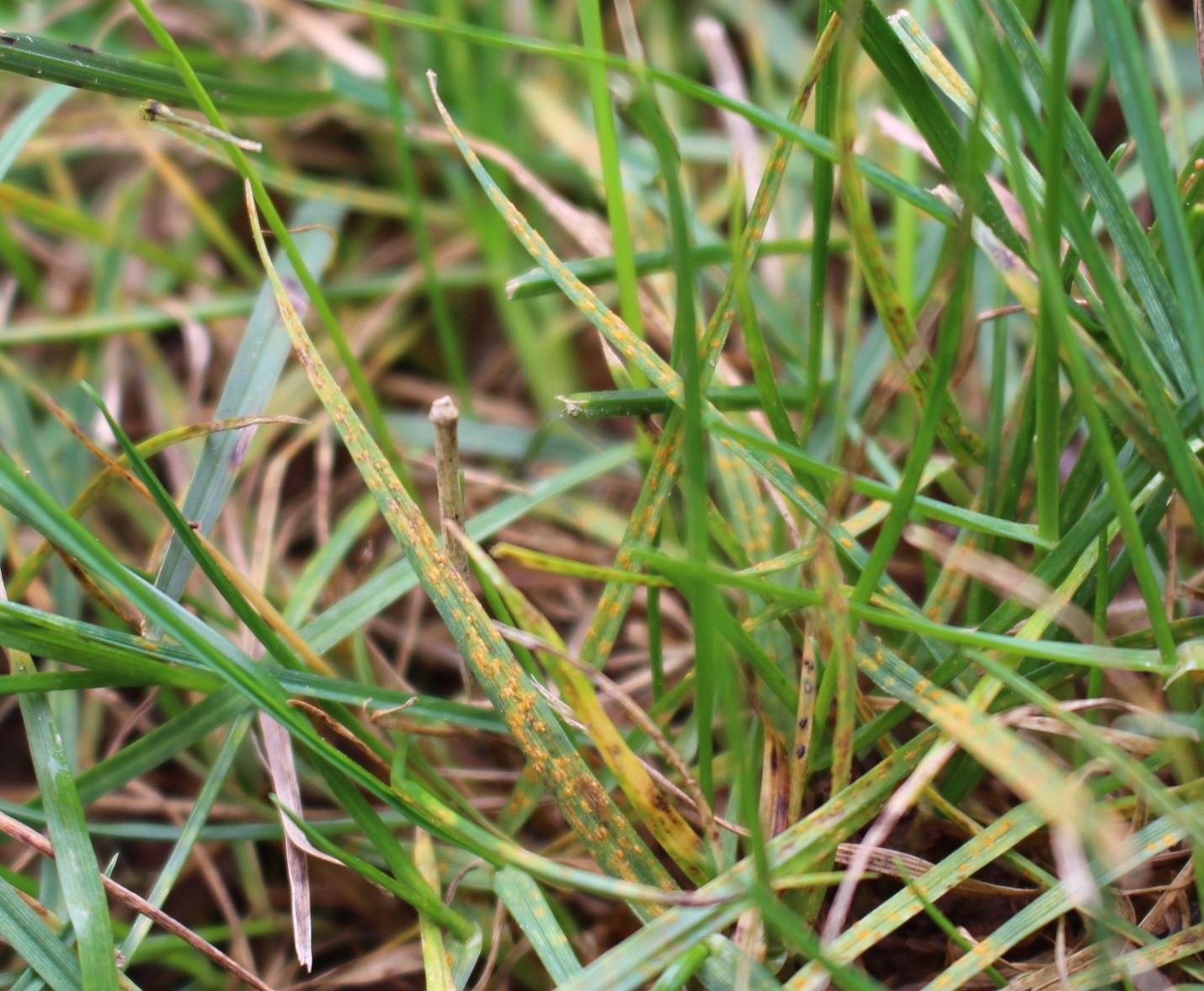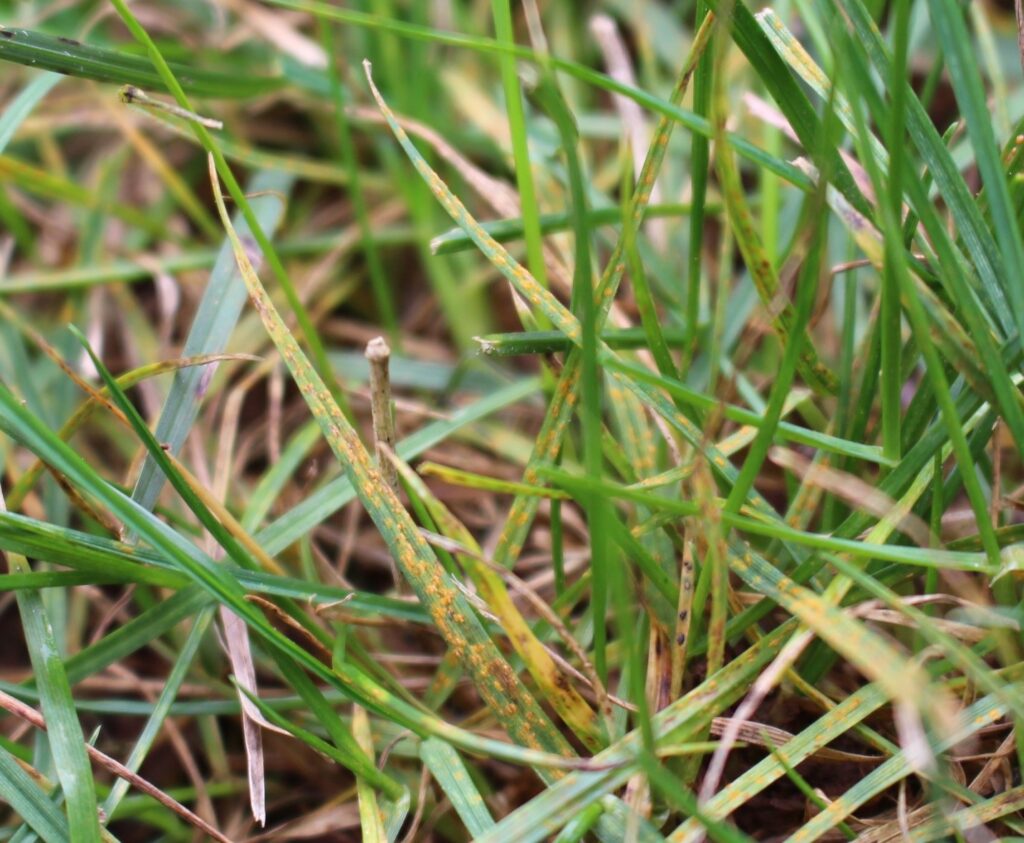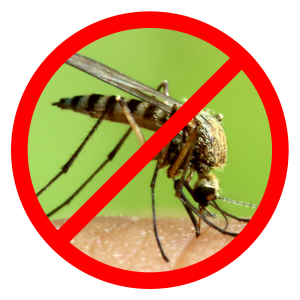Lawn Rust Disease

What is Lawn Rust Disease?
Lawn rust disease is a very common and harmless foliar fungus that develops on areas of turf that are slow growing. This disease can be found from mid-summer into the cooler months of the fall.
What does Lawn Rust Disease look like?
Lawn rust disease will turn areas of turf yellow-orange in color. Upon closer inspection there can be pustules along the surface of the grass blades. The spores of this fungus often rub off in a powder form leaving an orange residue on sneakers, equipment and other various objects that come in contact with the infected turf areas. Every once in a while, we get a customer that calls and asks why their dog’s feet are orange in color. The answer is simple, the spores from the rust fungus comes off easily and attach to the dog’s feet.

Will Lawn Rust Disease harm my lawn?
Lawn rust is a cosmetic disease that will NOT cause permanent damage to your lawn. In most cases it will grow out on its own. However, your lawn may have poor growth in the infected areas because the leaf blades are covered with spores which block sunlight from reaching the plant. This affects photosynthesis and the production of necessary carbohydrates that the plant needs to grow and be healthy. Recovery time varies on site conditions and cultural practices. The bottom line is don’t worry!
Why did my lawn get Lawn Rust Disease?
Lawn rust will often first occur in shaded or protected areas that have poor air circulation, such as under trees or at the base or behind permanent structure’s. Lawn rust commonly develops during cool nights with heavy dew and light, frequent rainfall. Warm, cloudy, humid conditions followed by hot, sunny weather will also favor rust development. Turf that has been weakened by summer heat, drought stress, low fertility, excessive thatch and shade, and soil compaction will be most susceptible to lawn rust disease. It can be spread by air, water, shoes, and equipment. Kentucky bluegrass, perennial ryegrass, and tall fescue can all be affected.
What can I do to help my lawn?
There are several things you can do to help your lawn with lawn rust disease.
- Water deeply and infrequently to stimulate growth. To start, water your lawn 1 hour per zone twice per week when using underground irrigation systems. If you’re using hose-end sprinklers, water 2 hours per zone twice per week. If these times do not improve the color or growth of the lawn you should add more time to your watering schedule. Increase the time by ½ hour increments. Water your lawn between midnight and 6 A.M. Avoid early evening watering as this increases the length of time grass blades remain wet. Many types of fungus, including lawn rust disease, requires the turf to be wet for a prolonged period of time to infect grass blades.
- Mow the lawn frequently at the proper height, 3-3 ½ inches in length and take 1/3 of the grass blade off at a time. Mowing below the recommended height will aid in depleting the grass of its energy reserves, it will also thin the lawn’s canopy and encourage weed growth. After mowing, wash off your equipment to help prevent the further spread of the disease the next time you mow.
- Reduce the thatch layer and soil compaction by having the lawn core aerated regularly, at a minimum of every other year. Thatch is a loose organic layer of dead and living shoots, stems and roots that develop between the root zone of the grass blades and the soil surface. Ideally, this layer should be no more than 1/2 inch in thickness. When thatch becomes excessive, the roots of grass plants tend to grow into the thatch layer rather than into the soil. When the thatch layer dries out due to drought or lack of moisture, the root system becomes stressed. Excessive thatch can be removed mechanically by core aeration or dethatching. The core aeration process has other benefits as well, such as also providing better movement of water, air and nutrients into the soil.
- Seed the lawn with disease resistant grass varieties to reduce susceptibility. These grass types/varieties should be selected based on site conditions.
- Fertilize your lawn regularly to help stimulate growth of the grass plants and minimize disease activity. This disease favors slow growing turf. Fertilizer will aid in growth, recovery and the overall health of your turf.
- In areas of heavy shade we recommend thinning the canopy of the trees to allow direct sunlight to reach the soil and improve air flow.
Should a fungicide be applied?
Fungicides can control many of the common diseases like lawn rust. A fungicide treatment will stop the spreading of a disease for a designated period of time. Fungicides will not replace good cultural practices that reduce stress to your lawn. The effectiveness of a fungicide depends on the correct diagnosis of the problem and proper timing of the applications. Fungicides need to be applied before the disease shows up or at the very first sign of disease activity. In most cases lawn rust disease does not reach levels that will damage a lawn before the grass can grow it out naturally. Therefore, fungicides are not usually needed for this disease.
Conclusion
Nothing beats good cultural practices. Proper watering, mowing, core aerating and fertilizing your lawn on a regular basis can beat this disease before it even starts. If your lawn shows signs of lawn rust disease or you think you may have it, give our office a call. If you are in our service area or a current customer, Fairway Green Inc. will be happy to come out and take a look.




